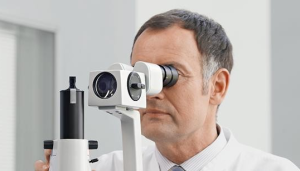
The medical branch of ophthalmology is mainly concerned with the eye’s pathology, physiology and anatomy. The field of ophthalmology covers up everything- from surgical procedures to small treatments. One who practices in this field is known as an ophthalmologist.
Ophthalmology’s history dates back to 800BC in the land of ancient India. By that time, over 76 diseases related to the eye were known already and more than 51 surgical processes were documented. It was in India where conditions like cataract were treated for the first time ever. Middle Eastern, Greek and Roman cultures documented such procedures as well back at that time.
Early ophthalmologists used a lot of tools. It was Rufus of Ephesus who brought a modern approach to the anatomy of the eye. This was refined later by Vesalius.
An ophthalmologist needs to have a degree and specialized training in ophthalmology before he/ she can start practising in this field. Different countries have their own way of awarding the degree, so the time period that needs to be spent in this field varies according to the country. There are quite a few specialities in ophthalmology, with each of them having their own sub- specialities as well.
Opticians and optometricians refer an ophthalmologist with the initial pathos diagnosis. Non- pathological ailments can be dealt with without the help of an ophthalmologist. Lens- fitting is one such example. However, it is advisable to consult an ophthalmologist so as to find out the origin of the problem and prevent deterioration. An ophthalmologist possess the skill in determining whether another disease inside the body is causing the eye disorder or is an after- effect of a medication.
The study of ophthalmology has helped in improving the medicinal industry to its entirety as well as influencing other industries such as sports and entertainment industries as well. This particular field has helped science in creating colour perception and artificial eyes. Now, one can easily reverse conjunctivitis, cataracts, broken lenses, etc.
The procedures nowadays are more effective and less invasive. Eye transplants and lasic surgery are commendable. The procedures can range anything from simple cleaning to the restoration of sight. Such advances help patients in doing their daily routine without even having a 20- 20 vision. Longer lifespan and better life is provided to animals by such treatments. The eye’s 3D imaging and tumour treatment are now addressed by researches these days.